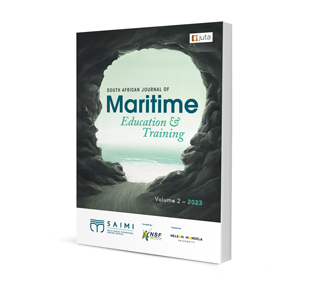
Smart Ports: Is SADC positioned for Transition?
Author: Leticia A Grimett
ISSN: 2790-783X
Affiliations: Honorary Research Fellow at the University of KwaZulu-Natal School of Law, South African International Maritime Institute
Source: South African Journal of Maritime Education and Training, Volume 2 Issue 1, p. 57-70
https://doi.org/10.47348/SAJMET/2023/i1a4
Abstract
Whereas international trade was previously the preserve of organised business, the digital revolution and the increased popularity of online purchases on the internet has meant that international trade is now easily accessible at an individual level. At both a domestic and international level, the Covid-19 crisis amplified the pressure placed on businesses and consumers to adopt digital technologies, and this has been catalytic in moving the public towards greater reliance on online transactions and a movement away from traditional purchasing practices. Increased global trade at an individual level has put greater pressure on global supply chains, with every link in the supply chain being called upon to perform more effectively and efficiently. Ports, as gates of entry into domestic markets and transshipment routes, have been under increased pressure to conform to the needs of the international trading community. Greater trading volumes have put ports at risk of higher levels of crime by international and domestic criminal syndicates. The changing environmental landscape has meant that ships are being transformed for compliance purposes. Increased concern about water quality and impacts on sensitive habitats has put additional pressure on port authorities. These pressures have led to the creation of smart ports, which are fully automated, taking advantage of the latest technologies, blockchain and artificial intelligence (AI), and state of the art monitoring software and processes, while adhering to and promoting compliance with both the latest environmental protocols and the United Nations (UN) 2030 Sustainable Development Goals (SDGs). In this contribution to the conference, the discussion centres on the challenges facing ports in the Southern African Development Community (SADC) region, in the light of the latest global developments. Smart ports and the drivers towards greater changes are discussed and analysed. Finally, the state of ports in the SADC region are evaluated in the light of the latest global developments in order to determine whether our ports are prepared to transition and changes that can be made to facilitate the process.